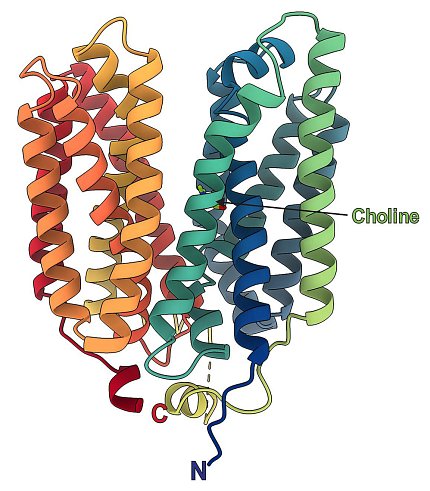Scientists Discover How an Essential Nutrient Enters the Brain

Photo: Arnold lab/UCSF
Researchers have discovered that choline, an essential nutrient vital for brain health, is actively transported from the bloodstream into the brain by a protein. The findings may inform the development of new drugs that take advantage of this mechanism to treat brain disorders. The NIH-funded study was published in Nature.
Using brain tissue from mice and humans, researchers found that the protein, known as FLVCR2, was densely present in the blood-brain barrier, a tightly packed layer of cells that line the brain’s blood vessels. Specifically, FLVCR2 was embedded in endothelial cells, which are specialized cells that control the flow of nutrients and small molecules from the blood to the brain. Additional experiments showed that FLVCR2 selectively recognizes and shuttles choline into the brain.
The blood-brain barrier is a protective cell layer that shields the brain from toxins, microbes and other harmful pathogens. The barrier also prevents many drugs that could treat neurological disorders from getting into the brain. Understanding how FLVCR2 interacts with choline and other molecules could help scientists develop drugs that mimic choline and use this molecular gateway to enter the brain.
To examine FLVCR2 at the atomic level, the researchers used a powerful technique known as cryo-electron microscopy to visualize the protein’s three-dimensional structure and see how choline molecules bind to pockets inside FLVCR2, similar to a lock-and-key mechanism. They used the 3D model to run computational simulations that showed how the protein adapts and changes shape to release choline into the brain.
Choline is critical for regulating mood and overall brain and nerve cell health. Choline is also involved in the production of acetylcholine, a neurotransmitter that plays a role in learning, memory and muscle control.
Results of this study can help scientists understand the biology underlying diseases associated with abnormalities in the brain’s blood vessels.
